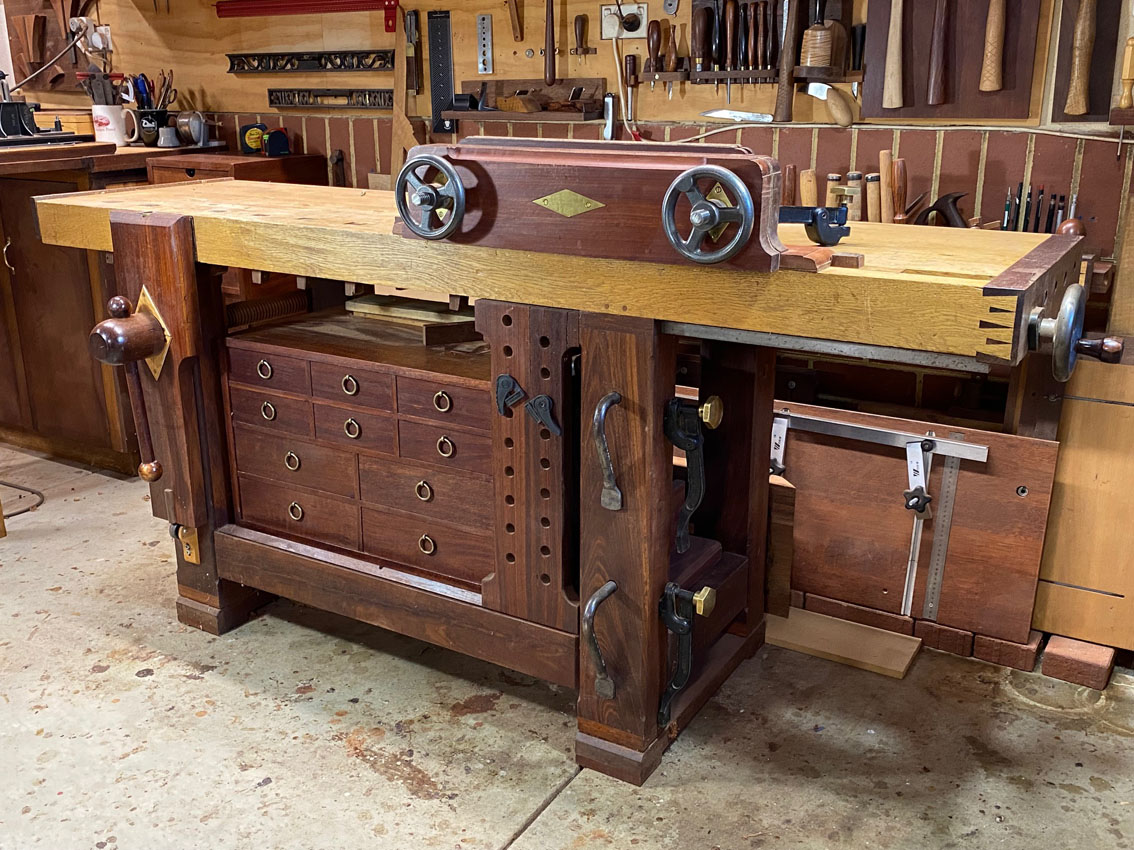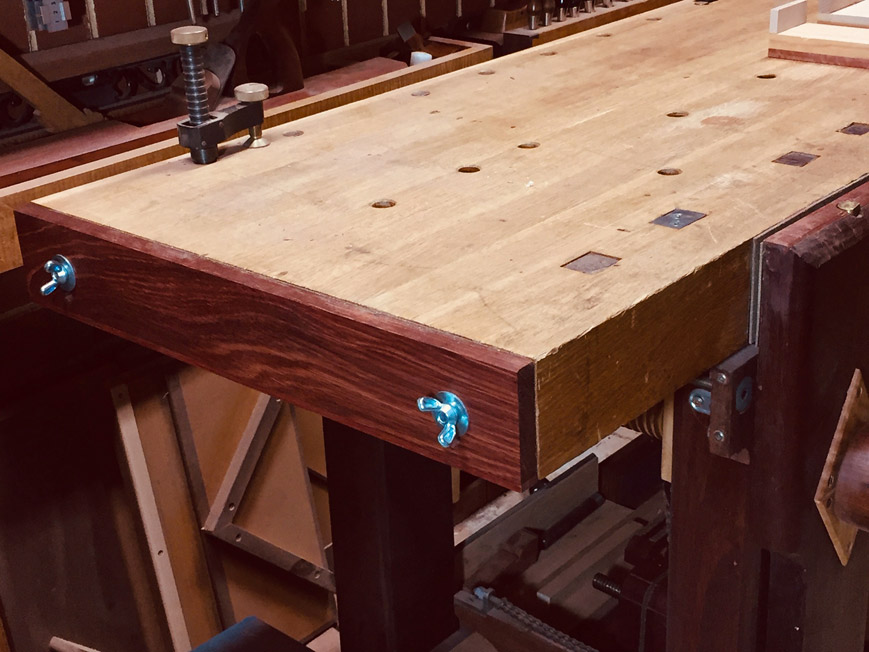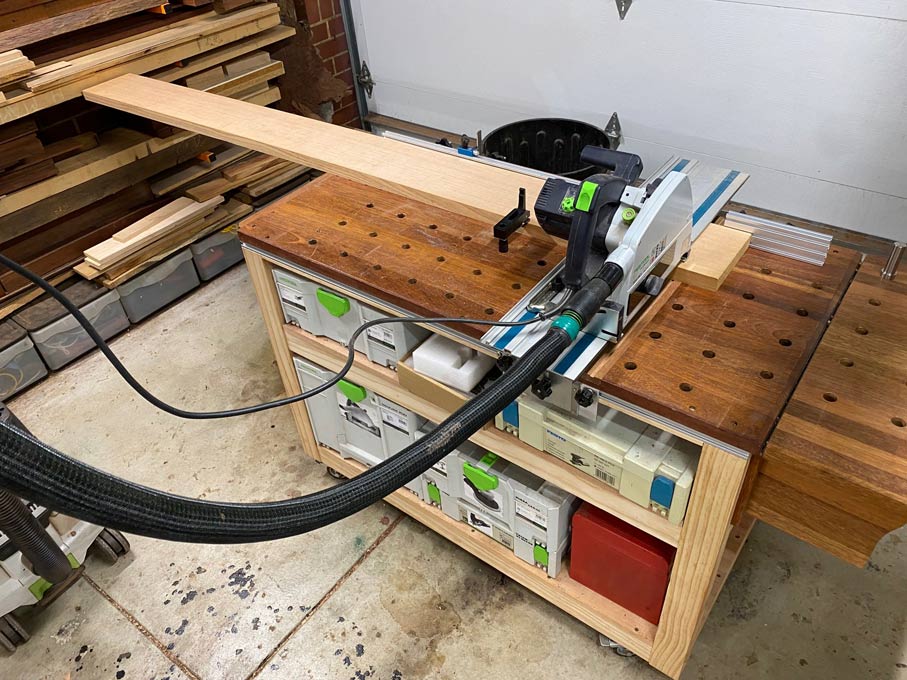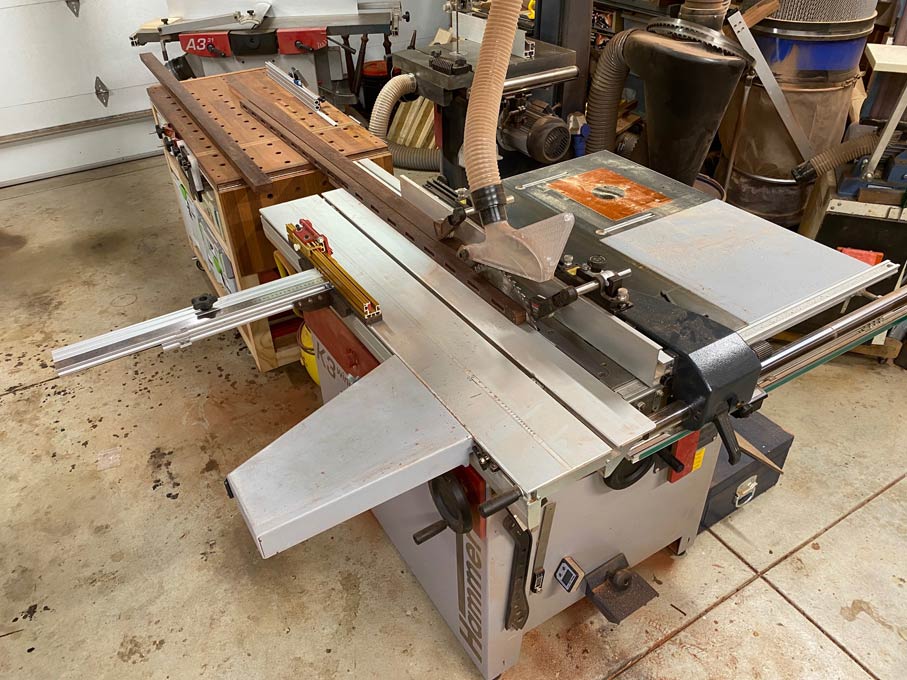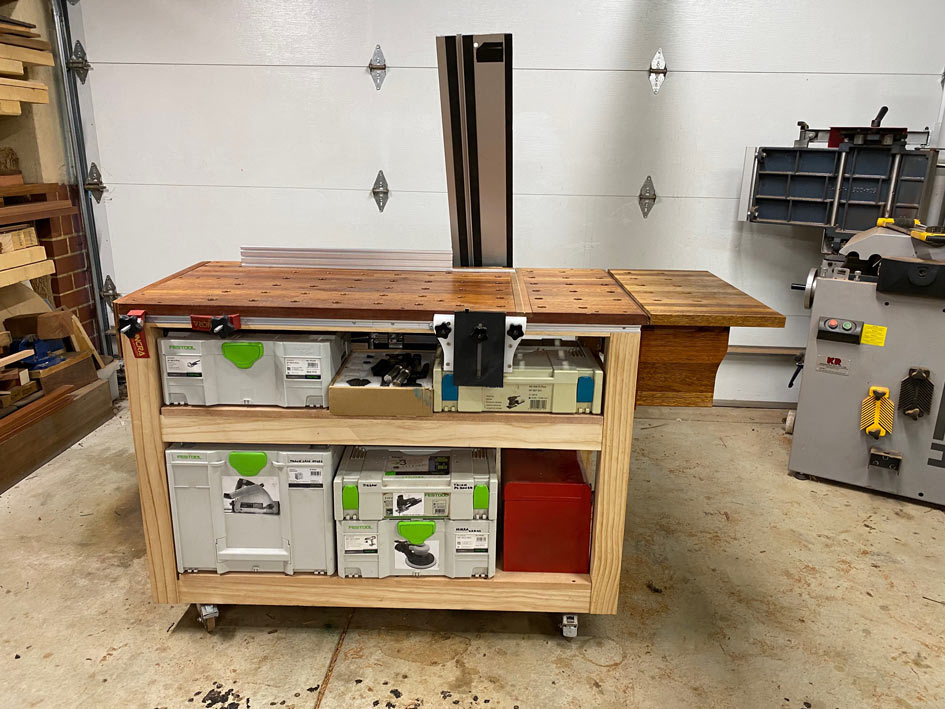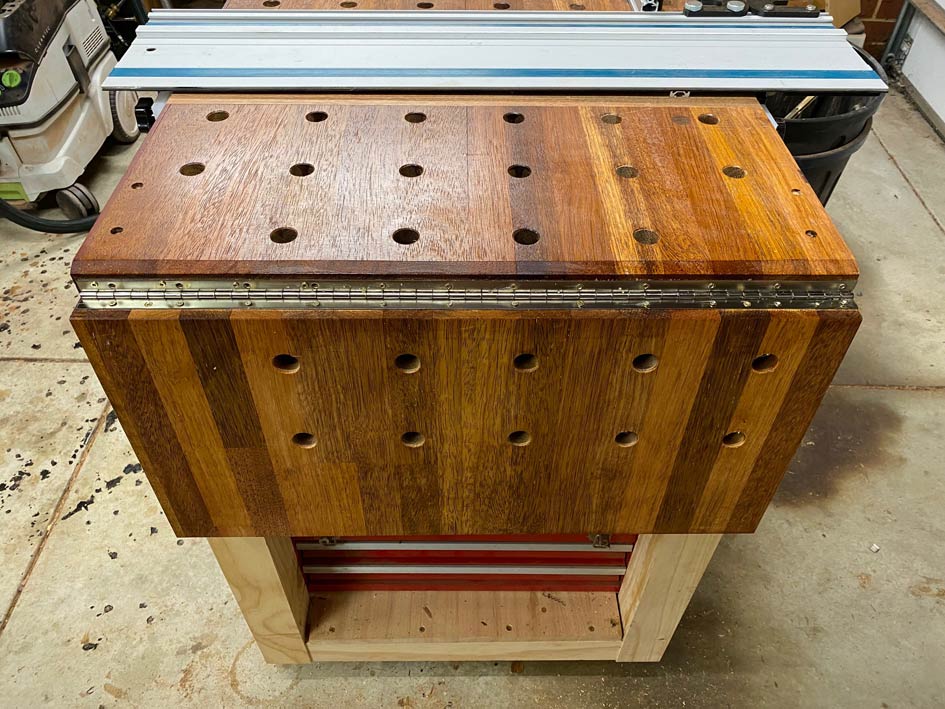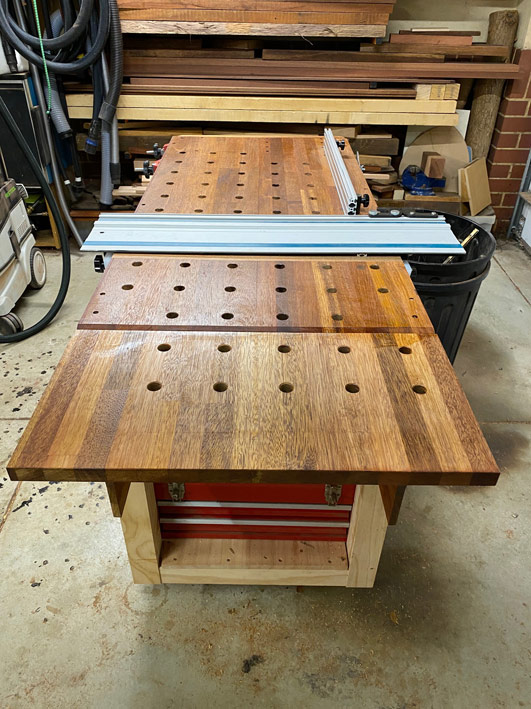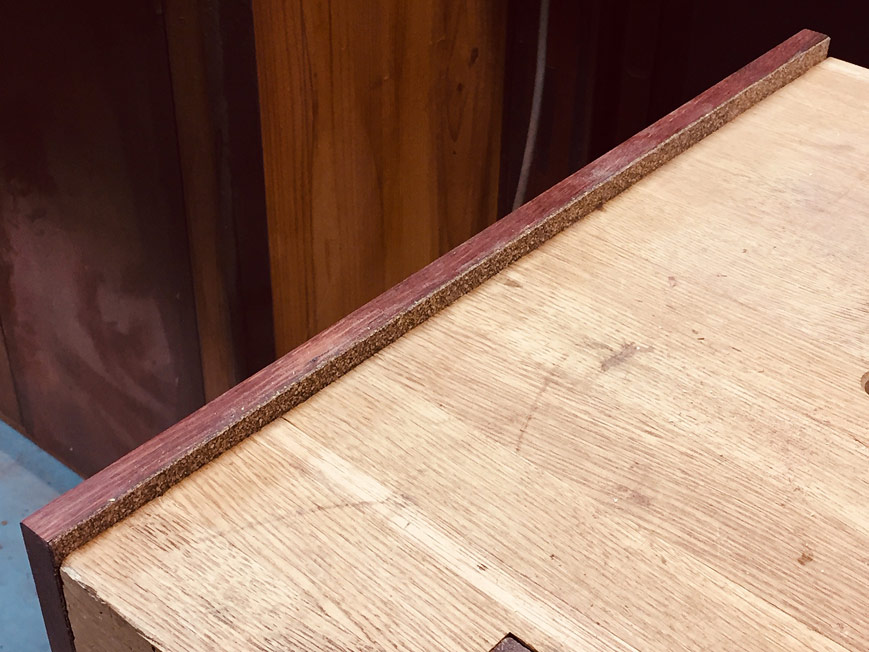As others have mentioned, a work bench for hand tools and a MFT for power tools are two different animals.
A hand tool bench needs to be as solid as possible. Being pretty is a bonus. This work bench is all about work-holding and being solid and immovable. A face vice and a tail vice are standard, with dog holes positioned for practicality.
I built this on about 10 years ago, and it is the most important tool in my workshop ...
Earlier this year I built an MFT. It was designed for three purposes: 1. For storage of the power tools whiuld be used with it, 2. As an outfeed table for the tablesaw, and 3. To hold work pieces for power tools, such as a track saw and router (on the track).
I strongly advise that a router table is NOT built into a work bench, unless you only do DIY stuff. If building furniture, it will get in the way of what a bench is needed for ... work holding. My router table is built into my tablesaw (a Hammer slider), see in a photo below.
Holding work for power tools is different from a hand tool bench. The dog holes in the MFT form a precise grid to position the wood or the tools for sawing, routing or sanding. Since the forces here are downward, unlike the hand tool work bench (where they are lateral), the MFT can be built lightly. Mine is on wheels to move around.
The top is a laminated hardwood, and this construction should resist movement better than my main work bench. The MFT is built with precision in mind; the work bench is not.
Oufeed ...
Note that the work bench uses 3/4" round dog holes for hold downs. The Grammercy and Veritas hold downs excel at down force, but are large and bulky. I also have square dogs along the front of the bench, and these are used predominantly.
The MFT uses lightweight and small clamp into 20mm holes. Mine are mostly from China. They do not need to be built like a brick outhouse.
Regards from Perth
Derek






